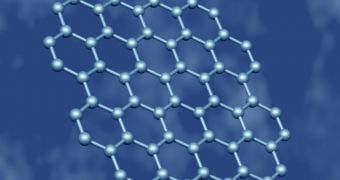Investigators at the University of Manchester, in the United Kingdom, have recently announced the development of innovative water filters, which rely on graphene for the fast sieving of salts and organic molecules. The interesting interactions between water and graphene are currently one of the most heavily-researched areas in materials sciences.
Graphene is a carbon sheet that contains pure carbon atoms exclusively. These atoms are arranged in a hexagonal, honeycomb-like lattice, which gives it amazing physical and chemical properties. The most important thing to note about graphene is that it is just one atom thick, which makes it a 2D material.
University of Manchester physicists Andre Geim and Konstantin Novoselov were the first to produce single-layers of graphene from graphite, back in 2004. Since then, the university has been at the forefront of graphene research, an area of science that has produced more than 3,000 studies to date.
While most researchers focus on using graphene for bringing forth a new generation of electronics, some materials scientists and industrial engineers want to use it to create advanced water filtration and desalination technologies. The UM team has just taken a major step forward in this direction.
In its natural state, graphene is completely and utterly hydrophobic, or water repellent. However, if tiny, narrow capillaries are constructed out of this carbon compound, the structures suck in water extremely fast. The only condition is for the water layer itself to be just one-atom thick.
This discovery has sparked intense academic and industrial interest, since new generations of water filtration and desalination devices and technologies may soon become possible. The work was conducted by Geim and colleague Dr. Rahul Nair.
In a paper published in the February 14 issue of the top journal Science, the team reports the results of a new research on the efficiency of graphene as liquid water filters. In tests conducted at the university, salt molecules larger than 10 Angstroms (10 billionths of a meter) across could not pass through the material.
The research group explains that the filtration process is extremely fast, and jokingly adds that the graphene layers can let clean water through as if they were ordinary coffee filters.
“The water filtration is as fast and as precise as one could possibly hope for such narrow capillaries. Now we want to control the graphene mesh size and reduce it below nine Angstroms to filter out even the smallest salts like in seawater. Our work shows that it is possible,” Dr. Nair says.
“Our ultimate goal is to make a filter device that allows a glass of drinkable water made from seawater after a few minutes of hand pumping. We are not there yet but this is no longer science fiction,” says study coauthor Dr. Irina Grigorieva, who is also a researcher at the university.

 14 DAY TRIAL //
14 DAY TRIAL //